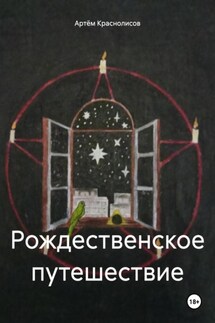Unwanted child - страница 20
The coach loudly announced the winner of the current contest. Theodore fell over on his back and looked at the girl who had pushed him out with flapping eyes. She was jumping with joy on the spot and smiling, waving her little hand at him in a friendly manner.
– Lucy, let's go! You won! Wow, look at that…’ her friend said, walking over to the finalist and taking her hand. The two of them disappeared behind the backs of the children sitting on the floor. Ted continued to sit on the floor looking around. Mr Petrie came over to him and helped him up, saying: ‘It's all right Theodore. Losing happens. You can't win all the time. It's normal. Don't worry!’
For the rest of practice, Ted sat and watched the finals along with the rest of the eliminated boys. There were two boys in the finals and Lucy, who had somehow miraculously made it in because all the contestants had forgotten about her at the time of the fight. However, now that there was no crush in the circle and everyone could see each other well and clearly, there was no one to hide behind. The two boys quickly enough pushed the weak Lucy outside the circle and continued their confrontation. The coach helped her up and patted her on the head, praising her for her persistence and courage. The girl returned to the others, not feeling sad about the victory that had eluded her. Inwardly, she was proud of herself for just being in the finals for the first time in a while, and that was enough for her.
There was not much time left before the end of the class, but it had been calculated in advance by the trainer and the CEC teacher. Mrs Donova's assistants flew into the hall with quick seven-mile steps and began to prepare the washbasins for boys and girls. They were tall square folding screens with small entrances on one side and were placed at different ends of the gym. Each of the assistants sat down on a stool inside, taking with them antibacterial disposable baby wipes to wipe each child thoroughly after sports activities. They also had with them several sets of clean white clothes in the form of T-shirts and shorts to change the kids. There were exactly as many sets of clothes as there were children in each group. Improvised changing rooms, aka washrooms, for girls and boys were ready. The coach and the tutor lined up the children in two rows, according to their gender. Washing and changing clothes took some time, so in order not to let anyone run away during the waiting period, the adults kept the children busy talking and playing with them.
Finally, clean and tidy, the children were ready for the next class, which followed physical education. In a tight group of two, they went to another room prepared for a new lesson.
The last class before lunch was devoted to the study of plants. For each of the pupils there was an interactive book on the floor, each page of which had basic textual information about a particular plant, as well as a 3D model of it, attracting the children's attention with its beauty. The room was equipped with a spotlight projecting an informative cartoon about the plants mentioned in the book. Of course, the vast majority of the information provided was about those flower crops that existed in the area, but the textbooks also contained a fair amount of material about the most common plants that exist around the world. This was by no means the first or the last children's botany class. After all, nature was so diverse that it was difficult even for an adult to memorise everything at once. However, this did not mean that the class repeated the same material from time to time and watched the same cartoon film. The city authorities of large cities prepared a special development programme on this discipline in such a way that it was easy to be perceived by children's immature brains. At the same time, it was not boring and uninteresting. While watching the informative video material, the children admired flowers and trees, having fun and watching how animations that came to life on the wall talked to them and told them about themselves, explaining how they should be cared for and how they should not be treated. Children's zoology classes were held in a similar way. However, the course about animals and insects was not as long as the one about plants, because the former existed much more than the latter.







